Ever heard of paper trading?
What if I told you it’s a way to develop your trading skills without risking actual money?
Paper trading is a method of virtually testing setups and strategies without putting real money on the line. It can help you gain experience and confidence before you switch to live trading.
I recommend it for a lot of new traders, so today, let’s look at why and how you’d use it. While it’s a great tool, you must be aware of something critical. Read on for that and a thorough primer on paper trading.
Table of Contents
- 1 What Is Paper Trading?
- 2 What Is a Virtual Trading Account?
- 3 Advantages of Paper Trading
- 4 Disadvantages of Paper Trading
- 5 Why Should You Practice Paper Trading?
- 6 Paper Trade to Test Order Types and Market Conditions
- 7 Live Trading vs. Paper Trading
- 8 The Psychology of Paper Trading
- 9 How to Start Paper Trading
- 10 My Paper Trading Tips
- 11 Remember: There Are Differences Between Paper Trading and Real Trading
- 12 Paper Trading Example
- 13 Trading Challenge
- 14 Conclusion
What Is Paper Trading?
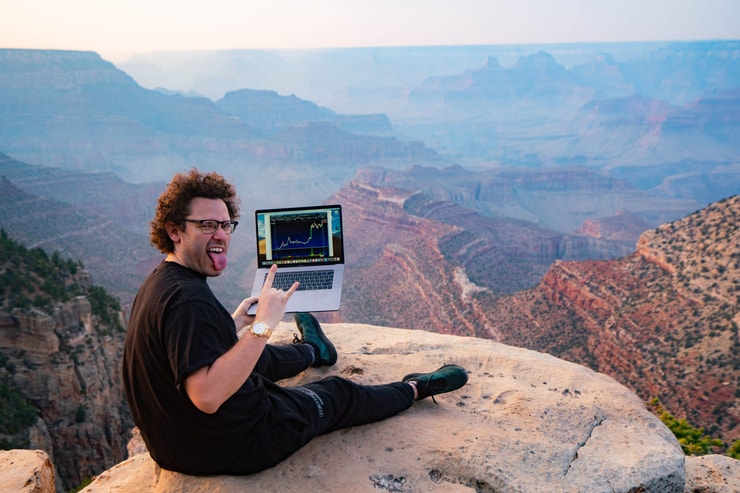
2025 Millionaire Media, LLCPaper trading is a form of simulated trading.
On the surface, it’s like regular trading: you choose stocks, place orders, and watch how it all plays out.
The key difference is that you don’t trade with real money. The transaction is virtual. No actual money enters or exits your account.
You could do that using a pencil and paper — that’s why it’s called paper trading. But there are simulated trading platforms that make it easier.
Paper trading apps look nearly identical to real trading platforms for the sensation of executing trades. Since trading can be overwhelming, paper trading helps take the edge off. And you can learn without risking your entire account.
New to penny stocks? Grab a copy of my FREE penny stock guide to learn how I trade volatile spikers.
What Is a Virtual Trading Account?
It’s an account you open on a simulator or paper trading platform.
The account comes with a virtual balance — that amount depends on the platform you use. Some give you access to $500,000 or even $1 million. It’s all fake money so you could go crazy…
But if you’re new, it’s smarter to be realistic and set up an account size similar to what you’ll trade with in the real markets. You’re more likely to learn what works and doesn’t work for you that way.
Advantages of Paper Trading
As I stated, you can test your trading skills without risking capital. I think that’s a great advantage.
If you’re new to trading, this can be a way for you to learn the ropes. And it’s not just for newbies. Experienced traders can use it to test ideas and new strategies.
The key is to treat your virtual account like you would real money. Only take risks that you’d be comfortable taking in real life…
When you transfer to a live account, you’ll be more likely to stick to the rules and setups that worked for you in simulation.
Disadvantages of Paper Trading
The biggest disadvantage is that there’s little to no emotion involved.
When there’s real money on the line, emotions can run high. A ton of thoughts go through your head when you’re in a trade … It can be stressful. That’s when new traders are more likely to make a wrong move.
You can be the best paper trader in the world but stink at trading real money. Especially if you can’t keep your emotions in check.
In a real trade, you could give in to fear and sell early, only to watch the trade work out as you planned. Or you could hold a loser too long because of greed and the fear of losing money.
It’s easier to focus on the setup and stick to your plan when there’s no real money involved. The challenging part is keeping that mindset when you trade live.
Why Should You Practice Paper Trading?

2025 Millionaire Media, LLCMany new traders scoff at the concept of virtual paper trading. If you’re not making money, why bother?
That’s the wrong mindset. There are many reasons why you may want to take it slow and practice…
Get Your Feet Wet
For newbies, the process of choosing stocks and executing trades can be overwhelming. There’s a lot to consider — and the pace is fast.
My videos and lessons can help give you an edge, but there’s still a learning curve. It takes time to get used to the market and learn the basics.
That means figuring out how to research and track stock patterns and execute trades. All that knowledge can be a great stepping stone to live trading.
Paper trading also offers you a chance to put what you’ve learned to work. You get to apply your knowledge using realistic trading scenarios.
Hungry for more tips? Get access to my thousands of video lessons — subscribe to Pennystocking Silver.
Save Your Money
With paper trading, you won’t earn anything, but you also won’t lose anything. So try to think about it positively.
All traders lose. But those losses can be particularly huge when you’re new.
That’s why I suggest taking small positions, especially at first. Gain experience and nail your process before scaling up.
More Breaking News
- FFAI Stock Jumps: What’s Driving the Surge?
- Rigetti Computing’s Quantum Leap: Analyzing Strategic Moves
- International Paper’s Financial Shifts: Strategic Moves and Their Impact
Try New Setups
Paper trading can help you choose stocks and execute trades in a way that best works for you.
So maintain a trading journal to track, understand, and refine the setups that are working and ditch those that aren’t.
But never tell yourself that one strategy will work every time. You have to constantly study and refine your plan based on what’s happening in the market.
The market could shift, and older setups may not work anymore. That’s an opportunity to use virtual money to test something new. It can be great for testing new setups or strategies.
Paper Trade to Test Order Types and Market Conditions

2025 Millionaire Media, LLCBefore you trade real money, familiarize yourself with the different order types — stop-loss, limit, and market orders.
When paper trading, just like real trading, you need to choose the right order to suit the market conditions.
And remember: your personal risk tolerance and trading style matter, too.
Live Trading vs. Paper Trading
Paper trading is like trading with training wheels. It can be helpful at first … But there comes a point when you need to take the training wheels off and ride on your own.
It’s a great tool, but be careful about using it too long before you switch to live trading.
Since it’s fake money, you don’t get the full risk/reward experience as with trading. You can develop a distorted sense of security.
Maybe try using it sparingly as you test out new trading methods. Everyone’s different so pay attention to your own needs.
The Psychology of Paper Trading
The psychology involved in paper trading can complicate things. You may be cool as a cucumber during practice. Then when you enter a real trade, with real money, you might act irrationally or on emotion.
This is one reason I suggest you don’t paper trade for too long. And once you go live, start small.
Take smaller position sizes and follow rule #1: cut losses quickly. Learn to manage your risk and losses.
It’s all about the experience. You may not profit much with small trades, but you can learn a lot about your personal risk tolerance. Plus, you can minimize losses and better understand trading psychology.
How to Start Paper Trading

2025 Millionaire Media, LLCPaper trading is easier today than ever before. Here’s what you need to know to get started…
Setting Up a Paper Trading Account
This is relatively easy. Multiple websites and platforms offer it for free or as a part of their services. Sites typically require basic information when you set up an account with them.
Here are two examples…
Financial Simulators
Financial simulators imitate the real market. You get fake cash to practice buying and selling stocks and options. These simulators mimic real market movements. Some simulators are in real time, and others have a time delay.
Fantasy Simulators
You’re probably familiar with fantasy sports where you pick and trade players. That’s an example of a fantasy simulator. They’re not real, and they typically charge users to use them.
Choosing a Paper Trading Simulator
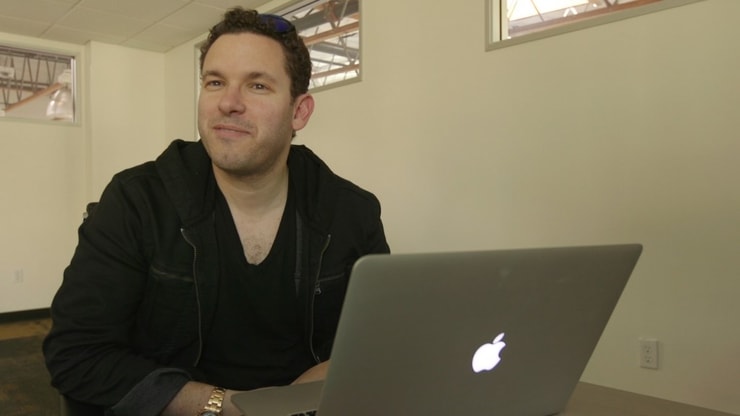
2025 Millionaire Media, LLCThere are a few options for simulators.
Some integrate with a brokerage account so users can test the platform. Others are platforms developed only for charting and tools. That means you’ll still have to execute real trades through your broker … when you’re ready for that.
First, I must note that I’m in no way affiliated with these companies or developers — except StocksToTrade, which I helped design.
Here are some of the big simulators…
StocksToTrade
I think the module on StocksToTrade is the best.** It was created by traders for traders. I helped design it to be an easy-to-use system and a user-friendly platform.
We did a lot of testing to design this program. I find it helpful to use its tools in tandem with the paper trading feature. This can help you prepare for live trading — delving into research and executing trades based on your careful analysis.
With StocksToTrade, you can also create multiple accounts with different amounts of starting cash. This allows you to try out different strategies, either with a small or large account.
You can also change the commissions. You can try a fee structure based on a per-share basis or a flat-rate commission. Or maybe you’ll use a commission-free broker. These options help make the experience more real.
When using StocksToTrade, try to mimic the constraints you’d encounter if you were live trading.
TradingView
TradingView is a charting and analysis platform. It has different pricing tiers based on your needs. In TradingView’s words, it’s “easy and intuitive for beginners. Powerful enough for advanced chartists.”
It includes real-time data and charting software and doesn’t require software installation. This network includes a paper trading module.
TD Ameritrade
TD Ameritrade is a big financial firm that offers a variety of services. Its thinkorswim trading platform features tools and resources you can access from your desktop or mobile device.
You can use thinkorswim for live trading. The platform also offers paper trading via its paper money module.
Webull
Webull is a discount broker with zero commissions and zero deposit minimums. It offers a free simulator — a Webull account starts you off with $1 million in virtual cash.
Most people won’t open a live trading account with a million bucks. If you want to learn from paper trading, stick to the amount you’d have in your real account.
Remember, the idea is to keep it as close to reality as possible. You want real data on realistic trades. The platform’s free to try if you sign up for an account.
E-Trade
E-Trade doesn’t offer a free demo, but you can paper trade if you have an account.
It’s not ideal if you don’t have the money to fund an account yet. But you can switch between your real and fake accounts at any time.
TradeStation
TradeStation paper trading is available for TradeStation clients. That means you need a funded account to have access to it, and that includes paying fees on that account.
That may deter newer traders. You also can’t try out the platform without putting money in an account first…
Fidelity
Fidelity offers a demo feature on its Active Trader Pro platform, but it uses delayed data. That’s a problem if you watch the market in real time — or want to learn to do it.
To me, it feels like cheating … You can’t try a trade if you already know how it will work out.
Robinhood
Robinhood doesn’t offer a paper trading platform or account option. That doesn’t surprise me.
This brings up an important point: when choosing an app, know the limitations.
If you plan to day trade based mostly on technicals, using an app may not be ideal. Apps may not give you accurate data, and that can sink trades. So what’s the point?
Executing day trades is a lot different if you use a laptop with charts, real-time data, and Level 2.
Creating a Paper Trading Portfolio
To create a paper trading portfolio, pick your platform, then set up your account with a realistic balance. Next, it’s time to research stocks to paper trade and get to work.
Depending on the platform, you may need to answer some additional questions or tailor the account settings. But it shouldn’t take long to get you up and running.
My Paper Trading Tips

2025 Millionaire Media, LLCBefore you start executing paper trades, consider these tips…
Be as Realistic as Possible with Paper Trading
This is important: be as realistic as possible with your account. Otherwise, paper trading probably won’t help you.
When you set up an account, you can set your balance to any number you want. Choose an amount that’s close to what you’ll have for your live trades.
Just because you can set up a practice account with a $200,000 balance doesn’t mean you should.
If anything, a high balance is more likely to reinforce the idea that it’s play money. It can prevent you from making meaningful progress with the exercise — or make you feel like you’re capable of taking ridiculous positions. Remember: it’s not real life.
For example, if you have $4,000 to trade, set your account with a $4,000 balance. If you think you’ll have $25,000 to trade, open your virtual cash account with $25,000.
Also, be realistic in your approach to trades. Seek out the types of trades you’d play as a live trader.
Yes, you can try a variety of methods. But as you track your trades and see what’s working, double down on the approaches that you find serve you best.
Have more questions about penny stocks? Get “The Complete Penny Stock Course” by my student Jamil. It’s a comprehensive review of everything I teach. (I also wrote the foreword.) Keep it on hand and refer to it often.
Record and Track Your Results
Keeping a trading journal is a smart way to track which setups work for you. It can help you refine your methods so you focus on and improve what works.
Don’t wait until you’re trading live to track your results. Make it part of your routine from the beginning. You’ll be more likely to develop good habits and see the benefit of reviewing your past trades from the get-go.
Remember, paper trading is usually most beneficial when you treat it as much like live trading as possible.
Keep note of as much as you can…
- Your trade thesis
- Your entry and exit points
- How many shares you purchased
- Why you decided to buy the stock
- The risk/reward ratio
- How the trade went
- What you learned
You should also note your mistakes, your mood, the time of day, and what you did right — or wrong. It all can help you improve over time.
Analyze Your Past Trades (Successful and Unsuccessful)
Take your trading journal one step further: analyze the results. When you analyze your data, even paper trades, you can learn a lot about how you trade. It helps you refine your trading techniques.
For example, if you try to play morning panics with a short-selling setup (like this) but your results fall flat, it’s time to change. Examine your methods, improve your setup, or hit the books and study more.
Break down what’s going wrong in your trades so you can fix the issue. For instance, if you don’t understand the trading process well enough, it may be time to revisit some of my study guides and webinars. Remember, education is key to being a self-sufficient, adaptable trader.
Once you’ve identified where you struggle, make a list of what you can do to improve. Setting specific goals can help.
Focus on Developing Your Trading Confidence
Here’s one of my key tips: use paper trading as a tool to develop confidence for live trading. But don’t let it become a crutch.
Some traders use it as an excuse to keep from live trading. Putting real money on the line is scary. It’s daunting to make the jump to live trading. But at some point, you must take the leap.
There’s no way you’ll win every time in trading. But with practice, you can better understand different setups. That’s why paper trading is great for many new traders.
It can also help you become more familiar with the process of making a trade and get a chance to put your research to work.
It can be exhilarating to see a paper trade go well — even if you’re not making money. Use this experience to build your confidence.
Remember: There Are Differences Between Paper Trading and Real Trading

2025 Millionaire Media, LLCGet this through your head … paper trading is different from live trading. I know. I’ve said it several times, but it’s true.
You can make it more realistic, but there’s no actual money on the line. So it’s easier to maintain a level head in your trades.
This can lull you into thinking that trading is no big deal. You won’t prepare for the emotions of live trading. And when real money is at stake, emotions definitely come up.
Use it for what it is: a tool and an exercise.
Another crucial difference between practicing and live trading is liquidity. When you paper trade, there are always shares available. Your entries and exits are simple.
That’s not the case in the real markets. You may not be able to buy or sell at the price you want when you want. You can miss trades or get stuck in trades. It happens to every single trader. Keep that in mind while you’re learning the ropes.
Paper Trading Example
Here’s an example of why paper trading won’t work if you aren’t realistic…
Let’s say you buy stock XYZ. It’s trading at $1, and you buy 1,000 shares. The stock has to move up for you to cover the cost of the commission alone.
Say it’s an OTC stock with a typical commission fee of $4.95 per trade. To profit, you need to cover your commission on the buy and sell of the trade.
- You buy 1,000 shares of stock XYZ at $1 = $1,000
- Buy commission = $4.95
- Then, you sell all your 1,000 shares of XYZ at $1.1 = $1,100
- Sell commission = $4.95
- $1,100 – commissions = $1,090
You made $90 on the trade. Keep in mind that you’ll likely need to pay taxes on your earnings, too.
Basically, the more shares you buy, the less the price needs to go up for you to start making money. But how realistic is that? Could you buy more shares in real life?
If you use more money from your account, it looks too easy to make money … Which is why you should only paper trade with the amount you have in real money.
Again, learn the basics. Paper trading is all about learning — trading isn’t a game. Someday, it will be YOUR hard-earned money on the line.
As a trader, mastering basic trading skills is vital for your success and survival.
Trading Challenge
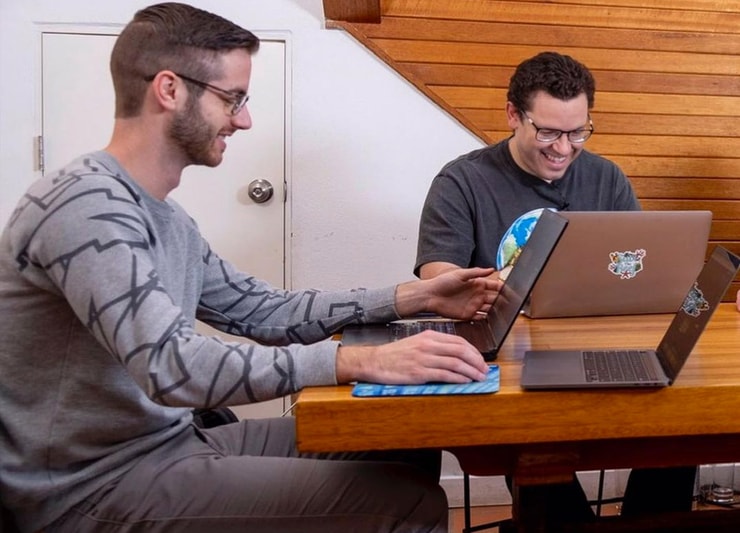
2025 Millionaire Media, LLCTo make the most of your training, you need to understand how the stock market works.
I created my Trading Challenge so that I could offer students everything I wish I had when I started.
One of my goals with the Trading Challenge is to offer a real-world trading education. You get access to tons of resources: chat rooms, videos, DVDs, webinars, and more.
I’m transparent in sharing my own trades. See all my trades here on Profit.ly.* When it comes to my students, I consider myself not just a mentor but also a fellow trader.
I want you to develop the skills and knowledge to forge a long-term trading career. That’s how you can find the trading style that works for you.
Conclusion
Paper trading can be an extremely helpful tool when you use it correctly. It’s a great way to practice trading and gain confidence. You also get to test different trading methods.
Once you have a good run on the virtual platform, you can start trading small. But remember rule #1 and cut losses quickly.
You’ll still experience a learning curve in the markets, but paper trading can help you shorten it.
What do you think about paper trading? Has it helped you learn new strategies? Let me know in the comments … I love to hear from my readers!
Disclaimer
*This level of successful trading is not typical and does not reflect the experience of the majority of individuals using the services and products offered on this website. From January 1, 2020, to December 31, 2020, typical users of the products and services offered by this website reported earning, on average, an estimated $49.91 in profit.
**Tim Sykes has a minority ownership stake in StocksToTrade.com.
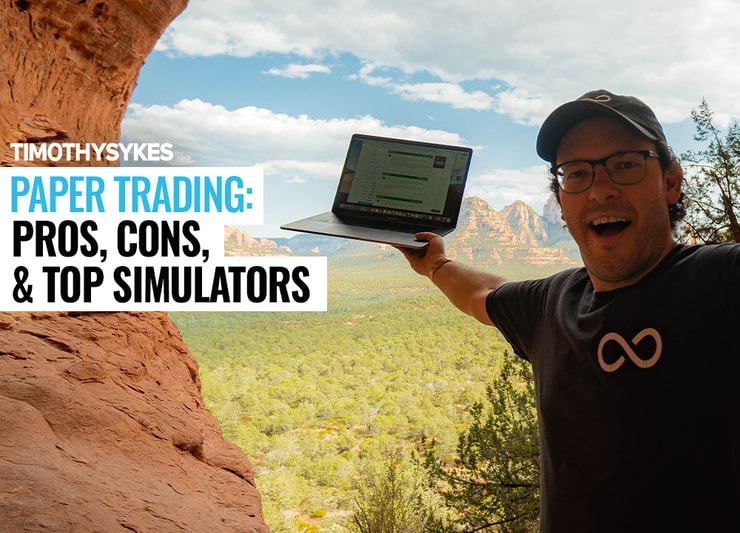
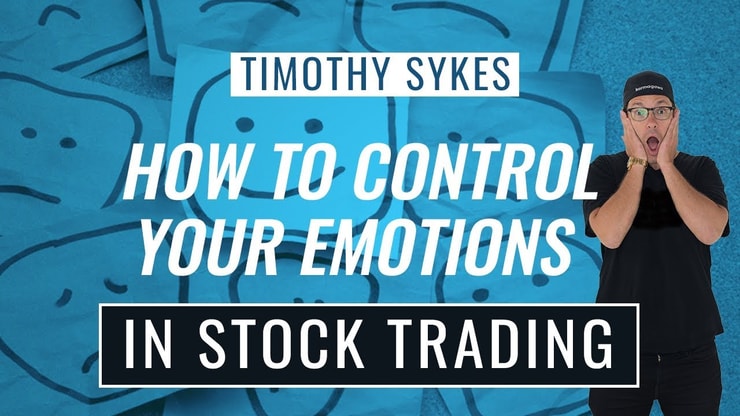


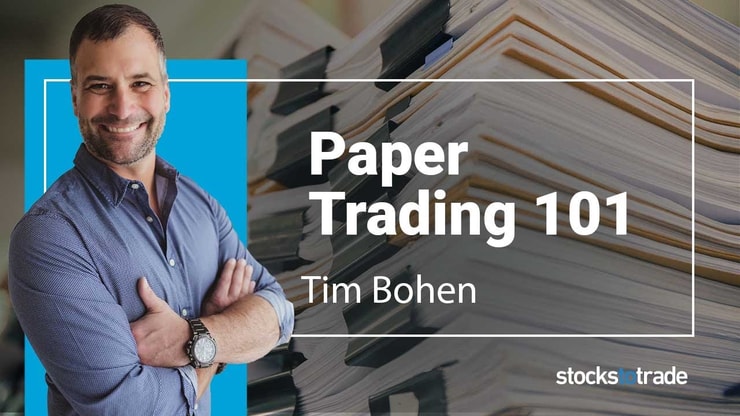








Leave a reply